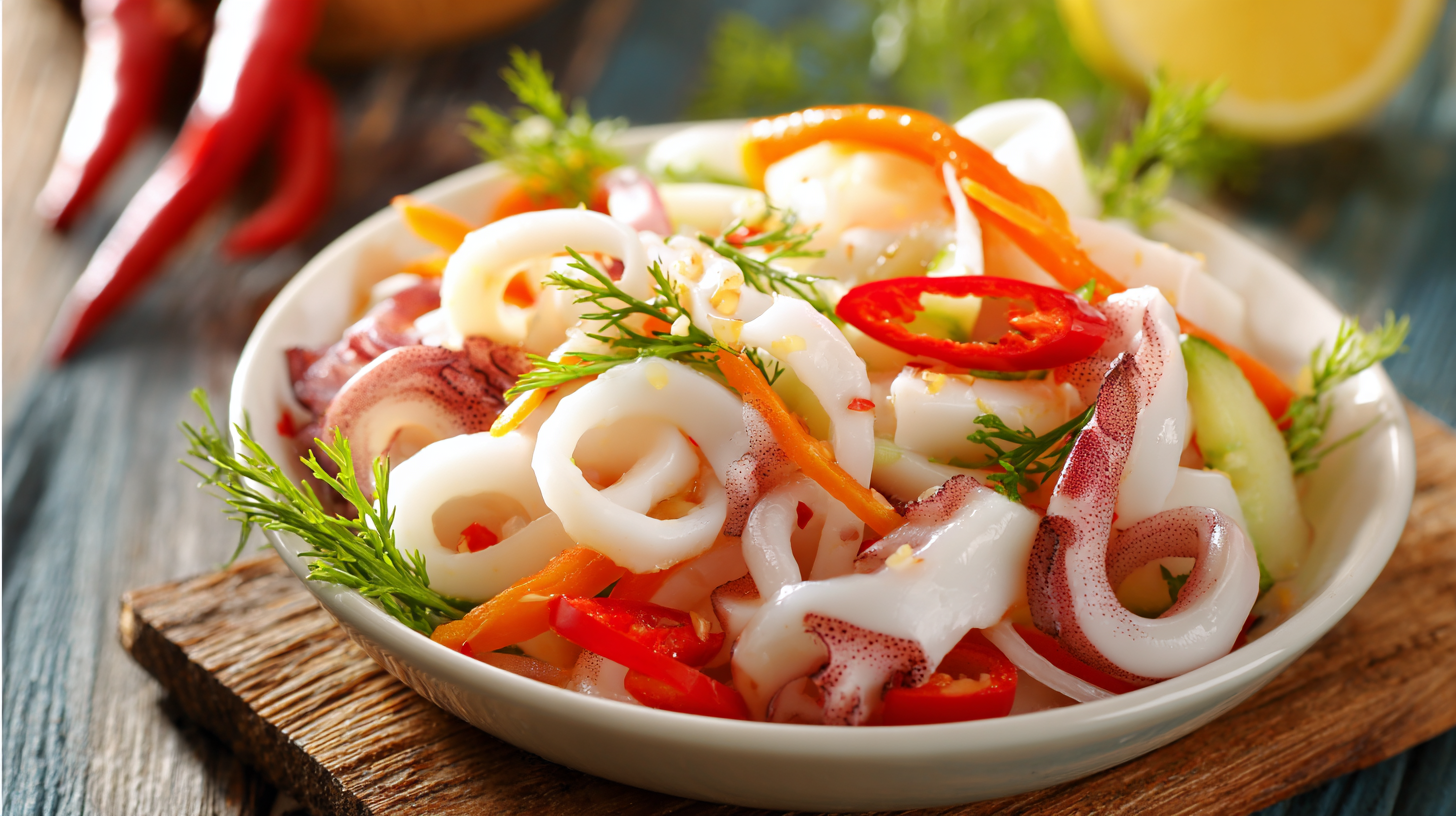In recent years, the global food industry has witnessed a remarkable surge in demand for innovative culinary offerings, with frozen squid with sauce emerging as a star player in this trend. By 2025, the market for this delectable dish is set to flourish, thanks to its unique blend of convenience and flavor, appealing to both casual diners and gourmet chefs alike. This blog delves into the latest industry trends that are shaping the landscape of frozen squid with sauce, providing insights into consumer preferences, market dynamics, and emerging opportunities. Additionally, we will offer essential tips for businesses looking to capitalize on this growing trend, ensuring they are well-equipped to navigate the evolving environment. Join us as we unlock the potential of this exciting culinary segment and explore how you can be part of the delicious revolution.

The frozen squid with sauce industry is poised for significant growth by 2025, influenced by various key trends. According to a recent market analysis by ResearchAndMarkets, the global frozen foods market is expected to reach USD 400 billion by 2026, with seafood products, including frozen squid, contributing substantially to this expansion. The increasing consumer preference for convenient and ready-to-eat meals is driving the demand for frozen squid with sauce, particularly in regions like North America and Asia-Pacific, where seafood consumption is rapidly rising.
Another trend shaping the industry is the growing awareness and preference for sustainable seafood sourcing. A report from the Marine Stewardship Council states that 82% of consumers are more likely to purchase seafood labeled as sustainable. As brands focus on eco-friendly practices and transparency in their sourcing methods, they are aligning with consumer values and enhancing their market appeal. Additionally, the advent of innovative sauce flavors, catering to diverse culinary preferences, is attracting a wider customer base, thereby further fueling the frozen squid market's progression towards 2025.
The global demand for frozen squid products continues to surge, particularly in emerging markets, reflecting a notable shift in consumption patterns. As reported by Market Research Future, the frozen seafood market is projected to grow at a compound annual growth rate (CAGR) of over 5% from 2022 to 2025. This growth is attributed to rising consumer awareness of the health benefits associated with seafood, as well as a growing appetite for diverse culinary experiences. In regions such as Southeast Asia and Latin America, frozen squid, often prepared with various sauces, has become a staple in both domestic kitchens and restaurants.
For businesses looking to tap into this promising market, understanding local preferences is crucial. One effective tip is to tailor your product offering to include flavors and preparations that resonate with specific cultures. For example, in Asia, squid products glazed with soy sauce or spicy chili sauce are increasingly popular. Additionally, leveraging social media to showcase recipe ideas and cooking methods can significantly enhance consumer engagement and drive sales.
Investing in sustainable sourcing practices is another key strategy. According to the United Nations Food and Agriculture Organization (FAO), sustainably harvested seafood not only meets consumer demand but also aligns with global efforts to promote environmental responsibility. By prioritizing eco-friendly practices, businesses can enhance their brand image and appeal to a broader customer base, ultimately unlocking even more opportunities in the burgeoning frozen squid market.

When sourcing high-quality frozen squid with sauce, it's crucial to prioritize freshness and flavor. First, seek suppliers who have a reliable reputation in the seafood industry. Look for certifications such as HACCP (Hazard Analysis and Critical Control Points) to ensure that the supplier adheres to food safety standards. Additionally, inquire about their sourcing practices, as sustainable fishing not only supports marine health but also influences the quality of the product.

Another essential tip is to sample the product before making bulk purchases. Request samples so you can evaluate the squid's texture and the sauce's balance of flavors. Pay attention to the color and aroma, as these are key indicators of quality. Moreover, consider working with suppliers who provide transparent information about their supply chain, as this can assure you of the product's integrity and traceability. By following these tips, you can successfully navigate the competitive landscape of the frozen squid with sauce market, unlocking global opportunities while ensuring customer satisfaction.
In the dynamic landscape of the frozen seafood industry, particularly the frozen squid with sauce segment, innovative marketing strategies will play a crucial role in unlocking global opportunities by 2025. Recent reports indicate that the frozen and refrigerated soup market is expected to experience significant growth, driven by a rising demand for convenience and quality among consumers. This trend underscores the importance of positioning frozen seafood products not just as alternatives to fresh options, but as gourmet choices that offer both taste and convenience.
To effectively promote frozen seafood, brands should leverage digital marketing techniques that resonate with health-conscious consumers. Highlighting the quality of ingredients and the ease of preparation can appeal to busy individuals and families. Furthermore, utilizing various packaging formats—such as eco-friendly materials that align with sustainable practices—can enhance product appeal. Given that market growth is influenced by consumer preferences shifting towards organic and non-GMO foods, emphasizing these aspects in marketing campaigns can help capture a larger audience in this competitive sector.
As the frozen seafood market continues to evolve, sustainability practices are becoming paramount in the supply chain, particularly in the frozen squid with sauce sector. Consumers are increasingly prioritizing environmentally friendly products, prompting businesses to adopt sustainable practices to remain competitive. This shift includes sourcing squid from responsibly managed fisheries that comply with regulations focused on preserving marine biodiversity and reducing overfishing. Moreover, suppliers are now inclined to utilize eco-friendly packaging that minimizes plastic waste, thus appealing to the growing segment of environmentally conscious consumers.
In addition to responsible sourcing, businesses are implementing transparent supply chain practices to build consumer trust. By providing clear information regarding the origins of their products, companies can reassure customers that they are making choices that positively impact the environment. Collaborations with sustainability organizations and participation in certification programs further enhance the credibility of frozen seafood brands. As we look toward 2025, companies that prioritize sustainability will likely unlock new market opportunities, cater to informed consumers, and build lasting loyalty through their commitment to preserving oceanic ecosystems.
This chart illustrates the projected growth in sales of frozen squid from 2023 to 2025, showcasing significant market opportunities in the seafood industry.
